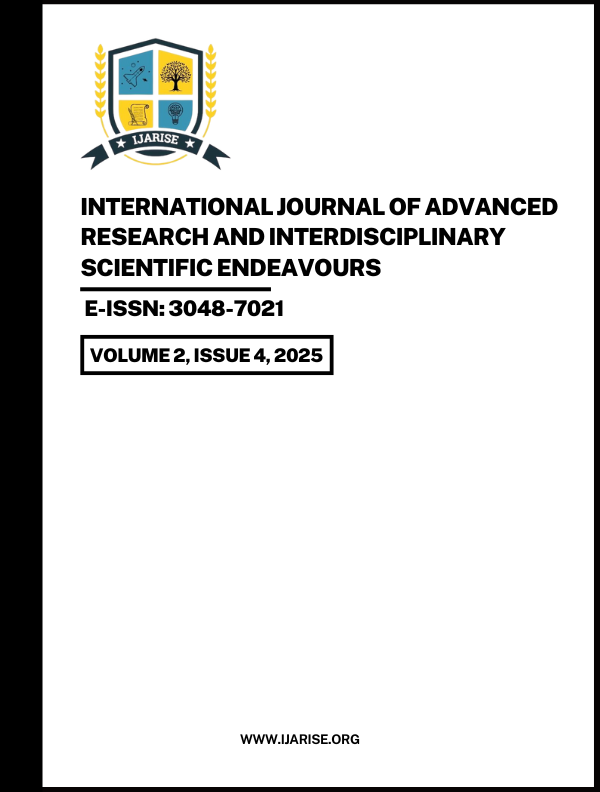Published 2025-04-30
Keywords
- Light and Shadow,
- Light Angle,
- Shadow Length,
- Shadow Formation,
- Physics of Shadows
- Rectilinear Propagation of Light,
- human perception,
- Shadow Analysis,
- Shadow Umbra,
- Penumbra,
- Antumbra,
- Celestial Shadows,
- Eclipses,
- Zero Shadow Day,
- Observational Astronomy ...More
How to Cite
Copyright (c) 2025 International Journal of Advanced Research and Interdisciplinary Scientific Endeavours

This work is licensed under a Creative Commons Attribution 4.0 International License.
Abstract
Shadows, often perceived as mere absences of light, hold significant scientific, cultural, and technological importance. This research paper explores the formation and properties of shadows, examining the interplay of light, object positioning, and observer perspective in their creation. The study investigates the structural components of shadows—umbra, penumbra, and antumbra—and their roles in everyday life and astronomical phenomena, such as solar and lunar eclipses. It further delves into the significance of shadows in human history, highlighting their influence on art, architecture, and literature, as well as their symbolic interpretations in philosophy and psychology, including Carl Jung’s concept of the shadow self. Beyond cultural and historical perspectives, the paper discusses the scientific relevance of shadows in planetary exploration, optical studies, and environmental processes. Concepts like Zero Shadow Day and the possibility of shadows concealing celestial bodies are examined to emphasize their role in space research. Additionally, the study explores modern applications of shadows in technology, including their use in solar energy optimization, 3D imaging, and virtual reality. By integrating insights from physics, astronomy, environmental science, and the humanities, this paper provides a comprehensive analysis of shadows and their multifaceted impact. The findings not only enhance our understanding of the nature and behaviour of shadows but also open avenues for further exploration in fields such as astrophysics, cognitive science, and emerging technologies.

